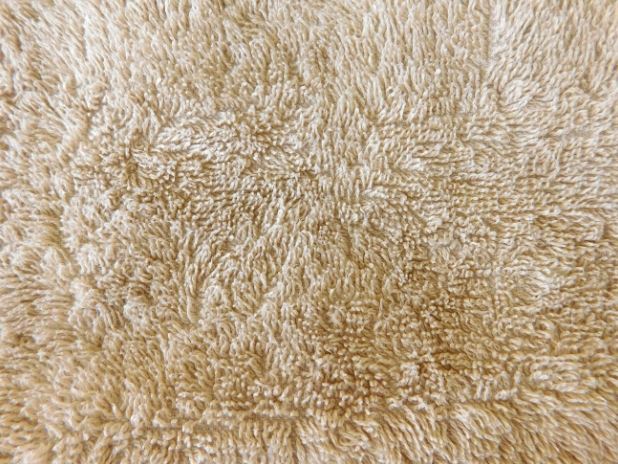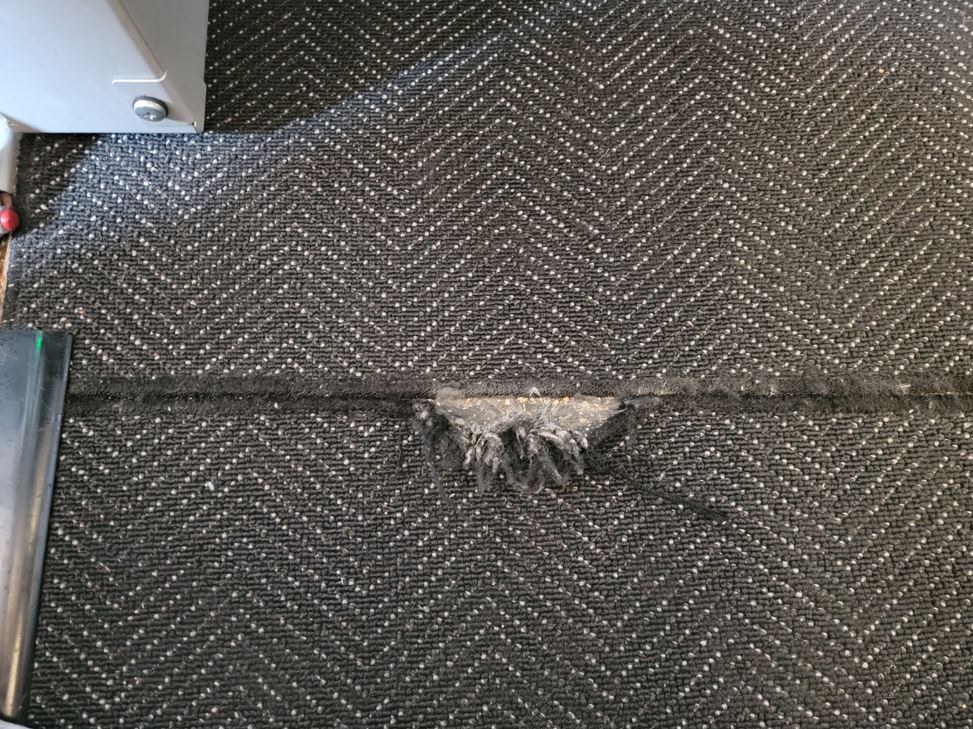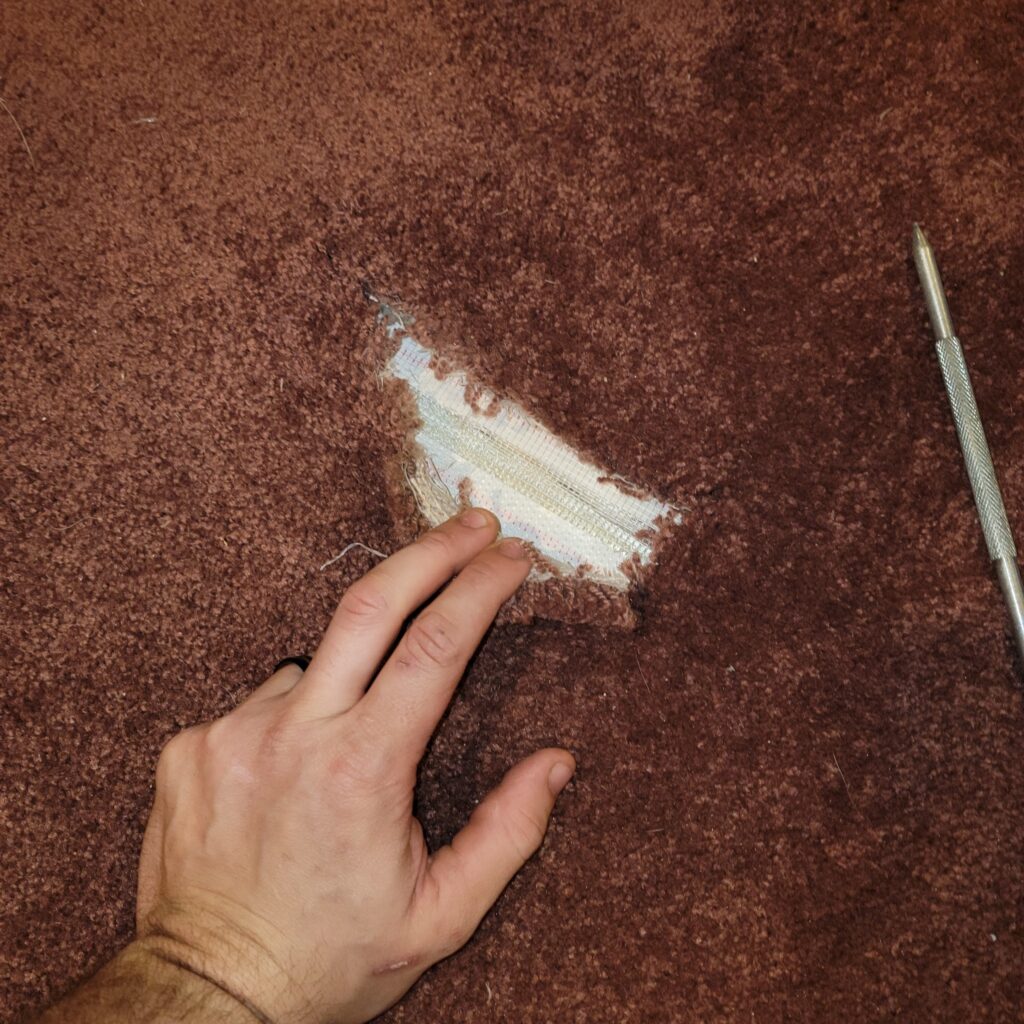Contact GM Services

We often encounter scenarios where a cherished carpet falls victim to damage, be it from pets, accidents, or wear and tear. When faced with such a dilemma, especially when a noticeable hole mars the beauty of your carpet. To patch carpet effectively to seamlessly integrate with the existing material requires skill and precision.
Professional carpet repair services patch carpet by first assessing the damaged area. This process involves selecting a matching piece of carpet that either comes from remnants of the original installation or cutting a small section from an inconspicuous area, like a closet.
The damaged portion is then carefully removed, and the new piece is fitted and secured in place using specialized tools and techniques such as heat-activated carpet tape or a carpet adhesive. The goal is to ensure the patch is not only secure but also blends indistinguishably with the surrounding carpet fibers.
Common Tools Used to Patch Carpet
A few of the most common tools used to patch carpets are a seam roller, a carpet knife, and scissors.
Seam Roller
A carpet seam roller is a tool that is used to press down and secure the edges of two pieces of carpeting when they are being sewn together. It is usually a small, cylindrical roller that has a handle attached to it.
To use the carpet seam roller, you place it at the edge of one piece of carpeting and roll it towards the other piece of carpeting. This will help to secure the two pieces of carpeting together and will keep them from unraveling.
Read About How To Choose The Best Carpet Repair Services In Toms River!
Carpet Knife
A carpet knife roller is a tool used to help cut and trim the edges of carpeting. It has a sharp blade at one end that can easily be slid under the edge of the carpet, and a rolling wheel on the other end that helps to push and pull the carpet as you cut.
A carpet seam knife is very similar but has a longer, narrower blade that is specifically designed for cutting seams in carpets. It can be tricky to get a good, clean cut along the seam, so if you don’t have experience using this tool often, a carpet knife roller is easier to use.
Carpet Scissors
Carpet scissors are a type of scissors with very sharp blades that are designed to cut through thick materials like carpeting. They have a built-in blade guard to help protect your fingers while you’re cutting. Carpet scissors are available at most hardware stores.
To use carpet scissors, place the material you want to cut on a flat surface and place the scissors blade on top of the material. Apply pressure to the blades with your hands and slowly cut through the material.
Find Out More About Professional Carpet Repair and How Does It Work?
Five Methods Professionals Use To Patch Carpet

Overlap patching
This is the most common method of patching a carpet and involves simply overlapping the damaged area with a new piece of carpet. To do this, you’ll need to first measure the size of the hole or damage, then cut a piece of replacement carpet that’s slightly larger than the hole. Once you have your replacement piece, lay it over the hole and use a sharp utility knife to trim around the edges so that it fits perfectly. Finally, use heavy-duty glue or adhesive to attach the new piece of carpet in place.
Invisible mending
If you have a small tear or h (less than an inch), then invisible mending might be the best option. This method involves using a special adhesive to attach the two pieces of carpeting together without overlapping them. To do this, you’ll need to first clean the area around the damage with a mild solvent. Next, apply the adhesive to both sides of the tear and press the two pieces of carpeting together. Hold in place for several minutes until the adhesive sets, then trim away any excess material.
Stitch down patching
If you have a large hole or damage in your carpet (more than an inch), then stitch-down patching is likely your best option. This method involves placing a new piece of carpet over the hole and attaching it in place with a sewing machine. You’ll want to use a heavy-duty thread and needle for this, and it’s a good idea to practice on a scrap piece of carpet first. Once you’re ready, sew the new piece of carpet in place using a zigzag stitch. Start at one edge of the hole and work your way around, making sure to backstitch at the beginning and end.
Heat-activated patching
Heat-activated patching involves using a special adhesive that is activated by heat, which helps to create a stronger bond. To do this, you’ll need to first clean the area around the damage with a mild solvent. Next, apply the adhesive to both sides of the tear and press the two pieces of carpeting together. Use a hair dryer or heat gun to apply heat to the area for about 30 seconds. Hold in place until the adhesive sets, then trim away any excess material.
Iron-on patching
Iron-on patching involves using a special adhesive that is activated by heat from an iron, which helps to create a stronger bond. To do this, you’ll need to first clean the area around the damage with a mild solvent. Next, apply the adhesive to both sides of the tear and press the two pieces of carpeting together. Place a piece of wax paper over the area and use an iron on the lowest setting to apply heat for about 30 seconds. Hold in place until the adhesive sets, then trim away any excess material.
How to Patch a Small Hole in a Carpet
Even a small hole can become a big problem if the carpet repair is not done correctly. A professional carpet repair service will stop and fix the damage before the hole gets bigger and creates a more costly issue to solve.
There are a few ways that small holes in carpet can be patched. One option is a super glue like Gorilla Glue. You can also use old-fashioned sheetrock mud and tape.
Gorilla Glue
Cut a small piece of carpet from an inconspicuous area, such as under a piece of furniture. Then, apply a small amount of Gorilla Glue to the back of the cutout and place it over the hole in your carpet. The good thing about this method is that it’s strong and it dries clear, so the repair will be nearly invisible. However, one downside is that it can be quite messy.
If you decide to go the route of using Gorilla Glue, be sure to read the instructions on the package carefully. You will also want to work in a well-ventilated area and wear gloves to protect your hands.

Sheetrock Mud
This method is best for small holes that are no larger than a quarter. To start, cut a small piece of carpet from an inconspicuous area, such as under a piece of furniture. Then, apply a small amount of sheetrock mud to the back of the cutout and place it over the hole in your carpet. The good thing about this method is that it’s easy and quick. However, one downside is that the repair may not be as strong as you would like.
Patching a Large Hole in a Carpet
If the hole is less than about 1 inch in diameter, you can likely patch it using one of the methods mentioned above. However, if the hole exceeds that size or if the carpet shows significant wear or damage, calling a professional carpet repair service for patching with a new piece of carpet becomes necessary.
To patch a large hole, cut a new piece of carpet large enough to cover the hole and extend at least 2 inches around its border. Apply carpet adhesive with a brush or roller to both the patch’s back and the area surrounding the hole. Press the patch into place and trim away any excess material.
Why Call A Professional?
At GM Services, we understand that there are several reasons why you might need professional assistance for carpet patch repairs. One of the primary reasons is that a poorly executed DIY attempt at fixing a ripped carpet can be quite noticeable to your guests. If not done properly, the repair could enlarge the hole or cause further damage and fraying to the edges.
Knowing how to repair a ripped carpet is essential, especially when replacing a section of your existing carpet. In such cases, if the hole is too large for a DIY fix, or you lack the necessary tools and materials, it’s best to seek the help of a professional. Our expert team at GM Services will ensure that your carpet looks as good as new once the repair is complete.
Our process includes the use of a donor carpet, which is essential for a seamless repair. We also utilize a dry cloth and a capped pen during the repair process, ensuring precision and care in handling your carpet. To find our services in your location, simply search for “GM Services Carpet Repair” and get in touch with us for all your carpet patching needs.
Contact us or Call 732-929-9669 for New Jersey Carpet Repair
Frequently Asked Questions
Q: Will adding a carpet patch fix loose carpet fibers in the surrounding carpet?
A: A professional carpet repair service should inspect the damage to be able to tell you if it’s possible to fix loose carpet fibers by patching the hole. If the fibers are loose due to vacuum cleaner damage or improper installation, then a carpet patch may not help. In fact, it may make the problem worse.
Q: What is the best carpet tape to use for damaged carpet repair?
A: The best carpet tape to use for damaged carpet repair is a task-specific heavy-duty double-sided tape. This type of tape is designed to stick to surfaces firmly and will hold up well under stress. Tape that is specifically designed for carpets is required, as other tapes may not be strong enough or may damage the surface of the carpet.
Q: How is a professional carpet cutter used in repairing carpet damage?
A: A professional carpet cutter is used to remove the damaged areas of the carpet. Doing this allows for a neater and more accurate repair. It also prevents any further damage from occurring to the surrounding areas of the carpet.
Q: Is replacing a carpet patch possible?
A: Yes, if the patch is from a single piece of carpet, it can be replaced. However, if the patch is from a cut piece of carpet, it will be more difficult to match the color and texture of the original carpet.
Q: How to fix pulls in carpet as a professional?
A: There are a few ways to fix pulls in carpet as a professional. One way is to use a crochet hook or a seam ripper to pull the fibers back into place. Another way is to use double-sided tape to attach a piece of fabric over the pulled area. A third way is to use a hot melt glue gun to attach new fibers over the pulled area. Whichever method you choose, make sure that you secure the fibers in place so that they don’t pull out again.
